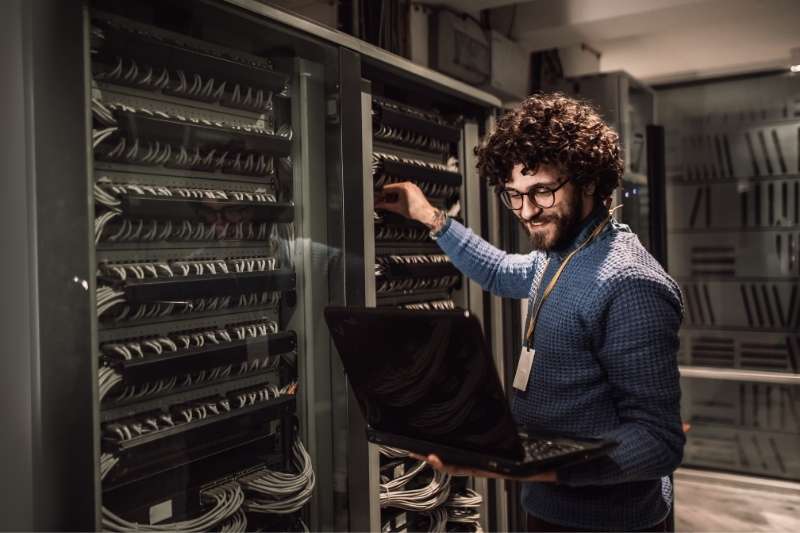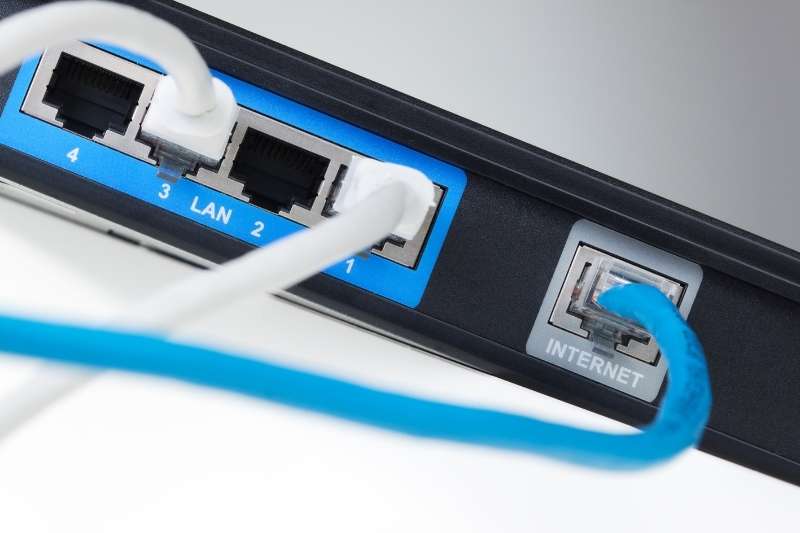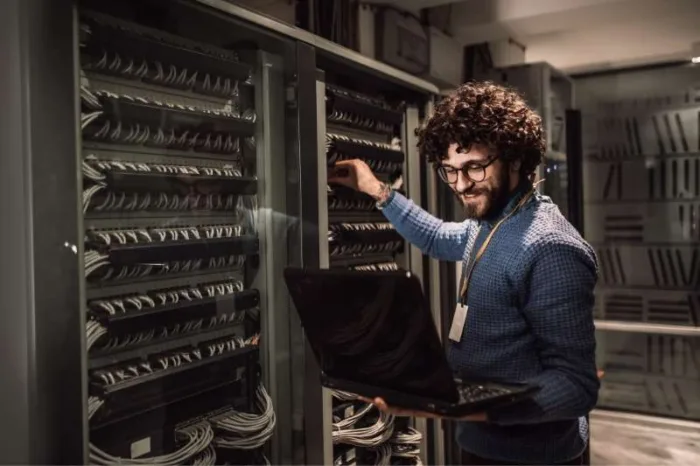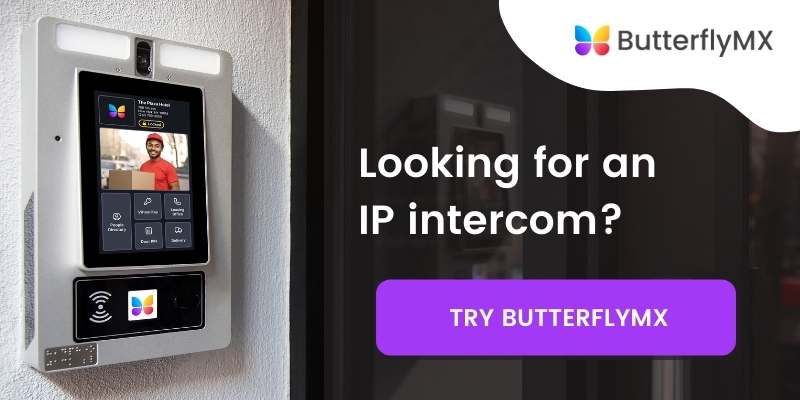Key takeaways:
- IP stands for “Internet Protocol,” which is essential for routing data across the Internet by assigning unique IP addresses to devices.
- Data is sent through packets, each with routing information, to ensure it reaches its destination.
- Modern intercoms, like IP intercoms, leverage IP technology to allow two-way communication and remote door access via smartphones.
- IP works with protocols like TCP to ensure data is received correctly, supporting functionalities like VoIP.

There’s no doubt that you use the Internet Protocol (IP) in your day-to-day life. The Internet owes much of its functionality to the Internet Protocol. And the rise of the Internet of Things (IoT) means that the power of the Internet can enhance everything from watches to IP intercom systems.
The Internet is a pillar of the modern world. Understanding how the internet works is incredibly valuable — and to understand the Internet, you must first learn about the protocols that define it. In this post, we explain the Internet Protocol and how it works. Then, we show you how IP and the internet have changed intercom and access control technology for the better.
This post covers:
- What is IP?
- How does the Internet Protocol work?
- History of the Internet Protocol
- The Internet Protocol and intercoms
What is IP?
IP stands for “Internet Protocol,” which is the rules all computers must follow to successfully transfer data over the Internet.
When you check your email or look up the weather, data probably wasn’t transmitted straight from its source to your laptop. Today, the internet is too big for all computers to connect directly. Instead, computers move data from router to router until it finally reaches you. Transmitting data is called routing, and the Internet Protocol helps ensure data is routed successfully.
How does the Internet Protocol work?
Computers use the Internet Protocol to send data packets from a source IP address to a destination IP address.
Every internet-compatible device has its unique IP address. An IP address is a set of numbers that allows a computer to identify itself on a network. It is a central network element that makes routing possible.
Here’s what happens when a computer uses IP to send data:
- First, the computer prepares the data for transit. The computer does this by organizing data into an IP packet. The packet contains information that helps with data transmission, like identification tags and descriptions of the transferred data.
- Then, the computer identifies the data’s intended destination. This is where IP addresses come in. The computer sets its IP address as the data’s source. It also chooses the data’s destination using the receiving computer’s IP address. The computer adds all this info to the IP packet.
- Finally, the computer sends the data. Data can reach its destination no matter how many routers it has to pass through first. Information included in the identification tags of each IP packet helps keep the data on track.
As important as IP is, it’s equally important to learn what the Internet Protocol doesn’t do. You might have noticed that there aren’t any steps that guarantee the data will arrive in the correct order or that the data will arrive at all.
Computers that depend solely on the Internet Protocol suffer high packet loss rates. Packet loss is a form of data loss that occurs when routers experiencing heavy traffic cannot receive any more packets. Computers use other protocols to ensure data arrives successfully and in the correct order. The Internet Protocol is just one part of the larger Internet Protocol suite.

What is the Internet Protocol suite?
The Internet Protocol suite is a set of protocols that work together to handle communication over the Internet. One of the most important protocols in this suite is the Transmission Control Protocol (TCP), which is so important that the entire suite is sometimes called TCP/IP.
Here’s what happens when a computer uses TCP/IP to send data:
- The computer uses TCP before IP. Before the data is sent from one computer to another, the computer uses TCP to split it into TCP packets.
- The computer uses the Internet Protocol to identify its destination and to prepare the data for transmission. The difference is that the data packets now have TCP and IP attributes.
- TCP ensures that data arrives correctly. While the Internet Protocol keeps data packets on the correct path, the destination computer can use TCP to put packets in the correct order. Also, if packets have been dropped, the destination computer can use TCP to request that packet again.
In short, the Internet Protocol ensures that data reaches its correct destination, while TCP ensures that the data arrives in the correct order.
Let’s examine the earliest days of the Internet to understand why these protocols are necessary.
History of IP
The Internet was born in the late 1960s. Scientists across the United States invented a new way to communicate with each other by inventing a network called ARPANET. However, when American scientists and scientists from other countries tried to collaborate, they found that everybody had different standards for transmitting data.
To solve that problem, researchers developed a set of rules called protocols that standardized methods of exchanging data between networks. In 1975, Stanford and University College London conducted the first international test of these rules, and TCP/IP became one of the foundations of the Internet.
Growing pains: from IPv4 to IPv6
In the mid-to-late 90s, the explosive growth of the Internet presented a few problems for network engineers. At the time, IP addresses took an IPv4 format, and the number of available addresses was shrinking. We were actually in danger of running out of IP addresses, which would have prevented any new computers from joining the Internet. So, the Internet Engineering Task Force stepped up with a solution: the longer IPv6 address.
While IPv4 addresses are still frequently used, the new IP address format ushered in by IPv6 is slowly becoming the standard. Only about 4 billion IPv4 addresses could ever be assigned. On the other hand, there are enough IPv6 addresses to assign more than a hundred to every atom on Earth — 100 times over. We’re not running out of those any time soon.

The Internet Protocol & intercoms
The most modern intercoms are called IP video intercoms. IP intercoms let residents see and speak to guests during a live, two-way audio and video call. Additionally, because these powerful Internet Protocol-enabled systems can handle and transfer so much data, they can connect with other Internet-compatible devices and allow residents to open doors using their smartphones.
To offer this level of functionality, IP intercoms use IP along with other protocols, including:
- Voice over Internet Protocol (VoIP): VoIP is a protocol that allows audio to travel between devices over the internet, like a phone call. VoIP’s advantage over traditional telephone lines is that the Internet can handle more data. Also, multiple protocols can be active at the same time.
- Session Initiation Protocol (SIP): SIP intercoms work with VoIP to deliver video data and ensure data syncs with the system’s audio.
- TCP/IP: Intercoms can use TCP/IP to offer more complex features, like assigning delivery passes or Visitor Passes.
Considering that four out of every five Americans have smartphones, residents expect easy internet access to simplify every aspect of their lives. Access control is no exception. With an IP intercom, residents can grant entry to guests from their smartphones wherever they have an internet connection. Imagine opening doors for cleaners or dog walkers, even if you’re halfway around the world.
IP intercoms offer features like door release audit trails and web-based dashboards for building staff to enhance security and streamline tedious administrative tasks.






